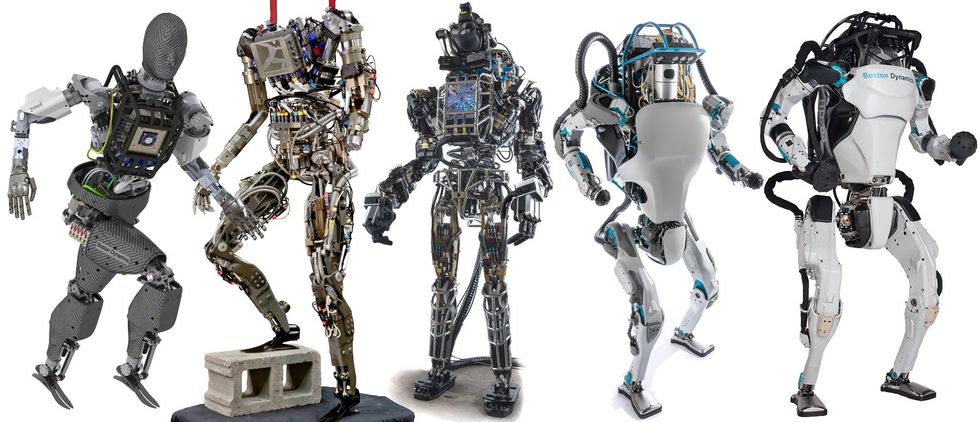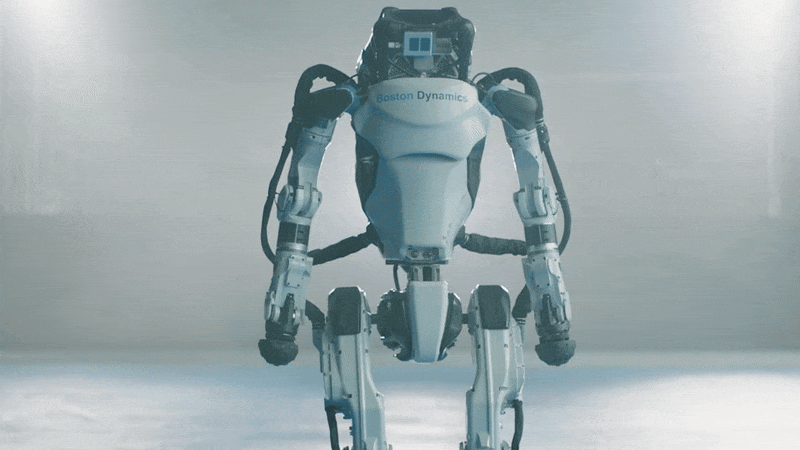In a new video posted today, Boston Dynamics is sending off its hydraulic Atlas humanoid robot. “For almost a decade,” the video description reads, “Atlas has sparked our imagination, inspired the next generations of roboticists, and leapt over technical barriers in the field. Now it’s time for our hydraulic Atlas robot to kick back and relax.”
Hydraulic Atlas has certainly earned some relaxation; Boston Dynamics has been absolutely merciless with its humanoid research program. This isn’t a criticism—sometimes being merciless to your hardware is necessary to push the envelope of what’s possible. And as spectators, we just just get to enjoy it, and this highlight reel includes unseen footage of Atlas doing things well along with unseen footage of Atlas doing things not so well. Which, let’s be honest, is what we’re all really here for.
There’s so much more to the history of Atlas than this video shows. Atlas traces its history back to a US Army project called PETMAN (Protection Ensemble Test Mannequin), which we first wrote about in 2009, so long ago that we had to dig up our own article on the Wayback Machine. As contributor Mikell Taylor wrote back then:
PETMAN is designed to test the suits used by soldiers to protect themselves against chemical warfare agents. It has to be capable of moving just like a soldier—walking, running, bending, reaching, army crawling—to test the suit’s durability in a full range of motion. To really simulate humans as accurately as possible, PETMAN will even be able to “sweat”.
Relative to the other humanoid robots out there at the time (the most famous of which, by far, was Honda’s ASIMO), PETMAN’s movement and balance were very, very impressive. Also impressive was the presumably unintentional way in which this PETMAN video synced up with the music video to Stayin’ Alive by the Bee Gees. Anyway, DARPA was suitably impressed by all this impressiveness, and chose Boston Dynamics to build the humanoid robot to be used for the DARPA Robotics Challenge. That robot was unveiled ten years ago.
The DRC featured a [still looking for a collective noun for humanoid robots] of Atlases, and it seemed like Boston Dynamics was hooked on the form factor, because less than a year after the DRC Finals the company announced the next generation of Atlas, which could do some useful things like move boxes around. Every six months or so, Boston Dynamics put out a new Atlas video, with the robot running or jumping or dancing or doing parkour, leveraging its powerful hydraulics to impress us every single time. There was really nothing like hydraulic Atlas in terms of dynamic performance, and you could argue that there still isn’t. This is a robot that will be missed.

Now, if you’re wondering why Boston Dynamics is saying “it’s time for our hydraulic Atlas robot to kick back and relax,” rather than just “our Atlas robot,” and if you’re also wondering why the video description ends with “take a look back at everything we’ve accomplished with the Atlas platform “to date,” well, I can’t help you. Some people might attempt to draw some inferences and conclusions from that very specific and deliberate language, but I would certainly not be one of them, because I’m well known for never speculating about anything.
I would, however, point out a few things that have been obvious for a while now. Namely, that:
- Boston Dynamics has been focusing fairly explicitly on commercialization over the past several years
- Complex hydraulic robots are not product friendly because (among other things) they tend to leave puddles of hydraulic fluid on the carpet
- Boston Dynamics has been very successful with Spot as a productized electric platform based on earlier hydraulic research platforms
- Fully electric commercial humanoids really seems to be where robotics is at right now
Evan Ackerman is a senior editor at IEEE Spectrum. Since 2007, he has written over 6,000 articles on robotics and technology. He has a degree in Martian geology and is excellent at playing bagpipes.



